
Bagpipes are a woodwind instrument using enclosed reeds fed from a constant reservoir of air in the form of a bag. The Scottish Great Highland bagpipes are the best known examples in the Anglophone world, but people have played bagpipes for centuries throughout large parts of Europe, Northern Africa, Western Asia, around the Persian Gulf and northern parts of South Asia.

The uilleann pipes are the characteristic national bagpipe of Ireland. Earlier known in English as "union pipes", their current name is a partial translation of the Irish language terms píobaí uilleann, from their method of inflation. There is no historical record of the name or use of the term uilleann pipes before the 20th century. It was an invention of Grattan Flood and the name stuck. People mistook the term 'union' to refer to the 1800 Act of Union; this is incorrect as Breandán Breathnach points out that a poem published in 1796 uses the term 'union'.

The chanter is the part of the bagpipe upon which the player creates the melody. It consists of a number of finger-holes, and in its simpler forms looks similar to a recorder. On more elaborate bagpipes, such as the Northumbrian bagpipes or the Uilleann pipes, it also may have a number of keys, to increase the instrument's range and/or the number of keys it can play in. Like the rest of the bagpipe, they are often decorated with a variety of substances, including metal (silver/nickel/gold/brass), bone, ivory, or plastic mountings.

The Great Highland bagpipe is a type of bagpipe native to Scotland, and the Scottish analogue to the Great Irish Warpipes. It has acquired widespread recognition through its usage in the British military and in pipe bands throughout the world.
The border pipes are a type of bagpipe related to the Scottish Great Highland Bagpipe. It is perhaps confusable with the Scottish smallpipe, although it is a quite different and much older instrument. Although most modern Border pipes are closely modelled on similar historic instruments, the modern Scottish smallpipes are a modern reinvention, inspired by historic instruments but largely based on Northumbrian smallpipes in their construction.

Zampogna is a generic term for a number of Italian double chantered pipes that can be found as far north as the southern part of the Marche, throughout areas in Abruzzo, Latium, Molise, Basilicata, Campania, Calabria, and Sicily. The tradition is now mostly associated with Christmas, and the most famous Italian carol, "Tu scendi dalle stelle" is derived from traditional zampogna music. However, there is an ongoing resurgence of the instrument in secular use seen with the increasing number of folk music festivals and folk music ensembles.

As Europe experienced a wave of roots revivals in the 1950s and 1960s, France found its regional culture reviving traditional music. Brittany, Limousin, Gascony, Corsica and Auvergne were among the regions that experienced a notable resurgence in the popularity of folk music. Traditional styles of music had survived most in remote areas, such as the island of Corsica and mountainous Auvergne, as well as the more nationalist lands of the Basques and Bretons.
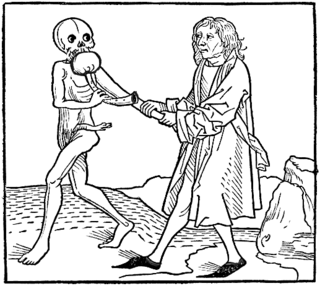
The Bladder pipe is a medieval simplified bagpipe, consisting of an insufflation tube, a bladder (bag) and a chanter; sounded by a double reed, which is fitted into a reed seat at the top of the chanter. The reed, inside the inflated bladder, is sounded continuously, and cannot be tongued. Some bladder pipes were made with a single drone pipe, and reproductions are similar to a loud, continuous crumhorn. The chanter has an outside tenon, at the top, near the reed, which fits into a socket or stock, which is then tied into the bladder.
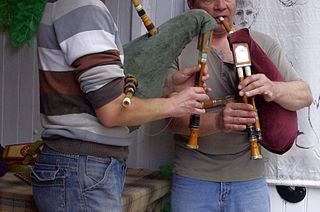
French bagpipes cover a wide range and variety of styles of bagpipes and piping, from the Celtic piping and Music of Brittany to the Northern Occitan's cabrette.

A gaida is a bagpipe from Southeastern Europe. Southern European bagpipes known as gaida include: the Albanian: gajde, mishnica, bishnica, Aromanian: gaidã, Bulgarian: гайда, Greek: γκάιντα or τσαμπούνα, Macedonian: гајда (gajda), Serbo-Croatian: gajda/гајда, Turkish: gayda also tulum.

Welsh bagpipes The names in Welsh refer specifically to a bagpipe. A related instrument is one type of bagpipe chanter, which when played without the bag and drone is called a pibgorn (English:hornpipe). The generic term pibau (pipes) which covers all woodwind instruments is also used. They have been played, documented, represented and described in Wales since the fourteenth century. A piper in Welsh is called a pibydd or a pibgodwr.
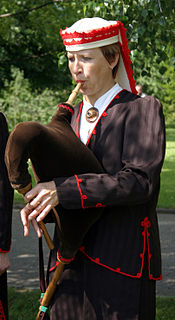
The torupill is a traditional bagpipe from Estonia.
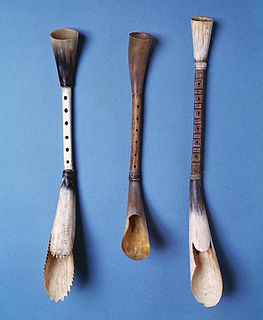
The pibgorn is a Welsh species of idioglot reed aerophone. The name translates literally as "pipe-horn". It is also historically known as cornicyll and pib-corn. It utilises a single reed, cut from elder or reed, like that found in the drone of a bagpipe, which is an early form of the modern clarinet reed. The single chambered body of the elder pipe has a naturally occurring parallel bore, into which are drilled six small finger-holes and a thumb-hole giving a diatonic compass of an octave. The body of the instrument is traditionally carved from a single piece of wood or bone. Playable, extant historical examples in the Museum of Welsh Life have bodies cut and shaped of elder. Another, unplayable instrument at the Museum, possibly of a later date, is made from the leg bone of an unspecified ungulate. Contemporary instruments are turned and bored from a variety of fruitwoods, or exotic hardwoods; or turned from, or moulded in plastics. The reed is protected by a reed-cap or stock of cow-horn. The bell is shaped from a section of cow-horn which serves to amplify the sound. The pibgorn may be attached to a bag, with the additional possibility of a drone, which is then called pibau cwd; or played directly with the mouth via the reed-cap.
This article defines a number of terms that are exclusive, or whose meaning is exclusive, to piping and pipers.

The gaita de boto is a type of bagpipe native to the Aragon region of northern Spain.

The gaita asturiana is a type of bagpipe native to the autonomous communities of Principality of Asturias and Cantabria on the northern coast of Spain.

The ciaramedda or ciaramèddha (Sicilian) is a type of zampogna with equal length double chanters. Other terms for this instrument include "zampogna a paru" and "terzalora" or simply "cornamuse".

The sruti upanga is a type of bagpipe played in Tamil Nadu, southern India. The instrument was often used to supply a drone to accompany mukha vina music.
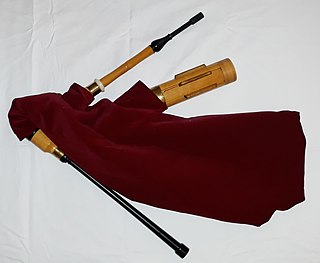
Shuttle pipes are a type of bagpipes which derive their name from the drones used to produce the harmony. Rather than the long tube-like drones of most bagpipes, shuttle pipes use a shuttle drone, a cylindrical chamber enclosing a series of folded drone tubes, each terminating in a slot covered by a sliding "shuttle" which can be adjusted to lengthen or shorten the distance traveled by air moving through the tube, thus flattening or sharpening the pitch of the note produced.

















